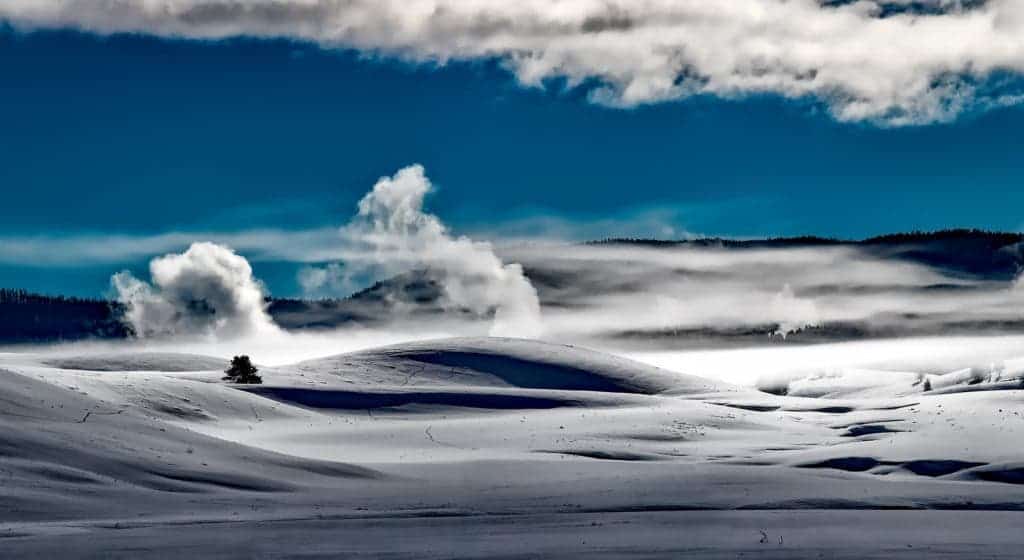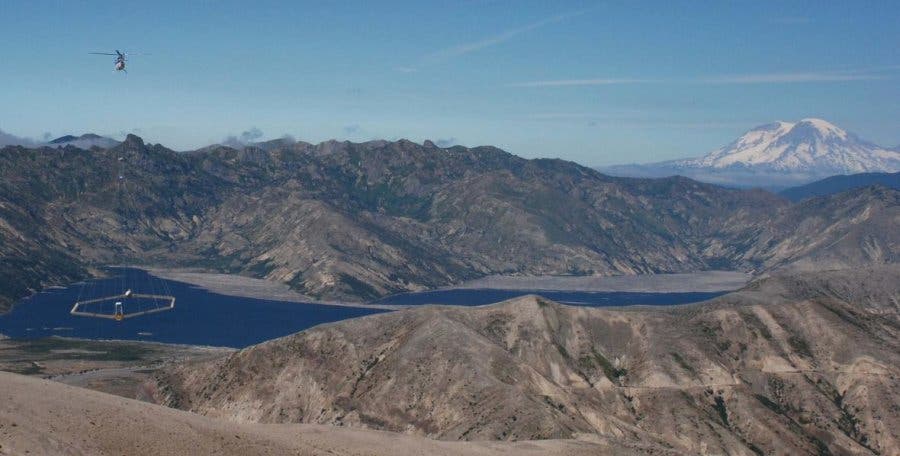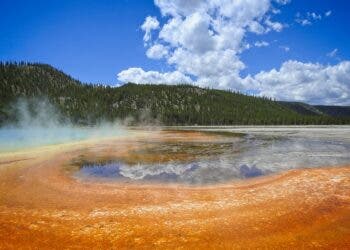
The first national park in the world is currently being surveyed by electromagnetic and magnetic sensing instruments in order to map its subsurface in unprecedented detail. While Yellowstone’s crust has been extensively studied, there are still many mysteries with regard to the flow paths water takes as it gushes through Old Faithful and the several other geysers of the park.
“Nobody knows anything about the flow paths of hot water. Does it travel down and back up? Does it travel laterally?” said USGS lead researcher Carol Finn.
Finn and colleagues are hoping to fill in the gaps with a new survey mission which began on November 7. For the next couple of weeks, a specially equipped helicopter will systematically probe Yellowstone’s underground piping from about 200 feet above the ground’s surface. Attached to the helicopter is an electromagnetic system resembling a giant hula hoop which can sense and record tiny voltages that can be related to the ground’s electrical conductivity.
Combined with existing geophysical, geochemical, geological, and borehole data, the expected new map will bridge the knowledge gap between the hydrothermal systems and the deeper magmatic system.

What we know for sure so far is that the famous hot water spurting from Yellowstone’s geysers is actually ancient precipitation. As snow and rain percolated the crust, it got heated and ultimately returned to the surface once the pressure reaches a critical threshold. This process can take hundreds, maybe thousands of years but it’s not clear yet which pathways this hot water takes to reach the surface.
The new survey will be able to differentiate between rock and water up to a depth of 1,500 feet , which scientists hope to be enough to map all the channels that hot water uses to gush out.
Understanding Yellowstone’s hydrothermal blueprint might be more important than you think. About 13,800 years ago, an eruption made a mile-wide crater at the bottom of Yellowstone Lake. Essentially, Yellowstone is a massive ‘supervolcano’ which might erupt with 2,000 times the force of Mount St. Helens. These massive outbursts are rare, striking somewhere on Earth only once or twice every million years.
“We would have a good idea that magma is moving up into the shallow depths,” said Jamie Farrell, a Yellowstone expert and assistant research professor at the University of Utah. “The bottom line is, we don’t know when or if it will erupt again, but we would have adequate warning.”






